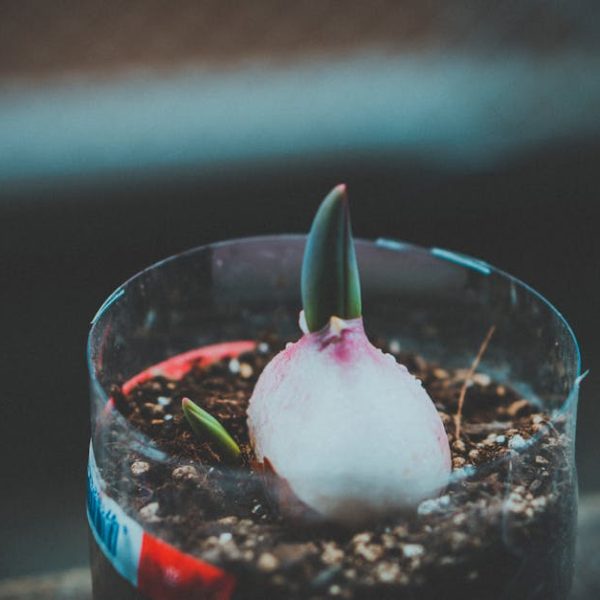The refreshing crunch and vibrant color of green beans make them a favorite choice for health-conscious foodies. Properly stored green beans can remain fresh and crisp, ready for that last minute culinary creation or healthy snacking option. But, for that to happen, you need to know some smart hacks that can make your beans stay fresher, longer.
Choosing the Right Green Beans for Storage
The first step towards a long-lasting stash of green beans begins right from selection. Always focus on the quality and freshness at the time of purchase. Fresh, quality green beans have a longer shelf life compared to wilted or damaged ones. Perfect green beans are vibrant, emerald green, and snap easily when bent. Avoid those with visible blemishes, and those that feel limp or rubbery.
Check-list for Selecting Fresh Green Beans:
- Choose beans with an intense green color.
- Go for firm, crisp beans.
- Avoid beans with visible spots, blemishes or cuts.
- The beans should break easily when bent.
Pro tip: Early morning at farmers’ markets often sees the arrival of fresh produce. That’s the best time to buy green beans for longevity.
Proper Washing and Preparation of Green Beans
Cleanliness is not only next to godliness, it’s also key to longevity when it comes to green beans. Dirt and bacteria can quicken the spoilage process, thus, a clean process of washing and preparation is essential. After purchasing, wash the beans under running water, and pat dry. Snip off both ends of the beans – they’re usually not edible.
Best Practices for Washing and Preparing Green Beans:
- Washing the beans under running water.
- Patting the beans dry with a towel.
- Trimming the ends.
Pro tip: Use a sharp knife to snip the ends off. The less damage you do to the cells of the beans, the longer they’ll stay fresh.
The Importance of Drying Green Beans before Storage
Moisture is not a friend of green beans during storage. Extra moisture can lead to mold development, hastening the spoilage process. After washing, ensure the beans are thoroughly dried before storage.
Steps for Drying Green Beans:
- Lay the washed and trimmed green beans on a clean, dry towel.
- Pat dry the beans gently with another towel.
- Leave to air dry for a few more minutes.
Pro tip/Best Practices: Never rush the drying process. Any left-over moisture can affect the longevity of your beans. If you’re short on time, consider using a salad spinner to speed up the process.
Storing Green Beans in the Refrigerator
The refrigerator can be an effective tool in keeping green beans fresh. For best results, store green beans in a perforated plastic bag or a container with a breathable lid. The ideal temperature for storing green beans in the refrigerator is between 36 and 41 degrees Fahrenheit.
Pro tips for Refrigerator Storage:
- Do not wash the green beans before refrigerating.
- Ensure the storage bag or container is not completely sealed – green beans need a certain amount of air circulation to stay fresh.
- Always check on your beans every few days. Remove any that have developed mold or begun to wilt to prevent them from affecting the others.
Dos and Don’ts:
- Do: Store green beans at the back of the refrigerator, where temperature fluctuations are minimal.
- Don’t: Store green beans close to fruits like bananas and apples. These release ethylene gas that can hasten the ripening and eventual spoilage of green beans.
Freezing Green Beans for Long-Term Storage
Freezing green beans can provide a great solution for long-term storage. However, it’s important to remember that freezing does not kill bacteria, it only makes them dormant, meaning thorough washing before freezing remains important. Also, freezing changes the texture of the beans, making them softer after thawing. Here is a simple procedure to freeze your green beans.
Steps to Freeze Green Beans:
- Wash and trim the ends of the green beans.
- Blanch the beans in boiling water for two minutes then quickly transfer them to ice water to stop the cooking process.
- Dry the beans, then place them in a freezer-safe bag or container.
- Press out as much air as possible before sealing.
Pros and Cons of Freezing Green Beans:
| Pros | Cons |
|---|---|
| Enables long-term storage | Alters the texture of the beans |
| Retains most of the nutritional content | Requires blanching before freezing |
Using Vacuum Sealing for Green Bean Storage
Vacuum sealing is a process that involves removing the air around the green beans before sealing them in a bag. This method can considerably extend the freshness and quality of green beans by lessening their exposure to oxygen, which is responsible for decay.
Pros and Cons of Vacuum Sealing:
| Pros | Cons |
|---|---|
| Dramatically extends the shelf life of the beans | Vacuum sealers can be pricey |
| Limits exposure to bacteria | Sealed bags can take up more space in the freezer |
Best Practices:
- Always clean and dry green beans before vacuum sealing.
- For the best results, freeze your vacuum-sealed green beans.
- Check on the sealed bag periodically to ensure that it’s still intact.
Using Freshness Savers to Maintain Green Bean Quality
Freshness savers such as green bags contain a mix of minerals that absorb and remove the gases that crops emit as they decay, extending the lifespan of your green beans. These bags can be used both in the fridge and on the countertop.
Tips:
- Always follow the manufacture’s instructions when using freshness savers.
- Remember to rinse your green beans before you put them in the bags.
Pros and Cons/Versus:
| Pros of Freshness Savers | Cons of Freshness Savers | Versus Other Methods |
|---|---|---|
| Extends the lifespan of the beans | Cost of the bags can add up over time | Vacuum sealing and freezing can keep beans fresher for longer |
| Can be used in both fridge and countertop storage | Not suitable for long-term storage | Freezing provides the best solution for long-term storage |
Remember, the key to keeping green beans fresh is to keep them clean, dry,
Key Takeaway:
- The freshness and quality of green beans at the time of purchase strongly influence their storage life.
- Cleaning, trimming, and thoroughly drying the beans prior to storage is essential.
- Proper storage methods, such as using a perforated plastic bag in the refrigerator or employing freshness savers, can greatly enhance the freshness of green beans.
- For long-term storage, methods like freezing and vacuum sealing provide excellent results, albeit with a slight change in texture post-thawing (for freezing) and potential storage space concerns (for vacuum sealing).
Knowing how to properly store green beans can mean the difference between enjoying a vibrant, crunchy snack or meal and throwing away spoiled produce. So, take the time to choose fresh beans, clean and dry them properly, and follow these smart storage hacks to maximize their lifespan.
FAQs
Q: Can I store green beans at room temperature?
A: Unfortunately, green beans don’t do well at room temperature and will wilt quickly. To maintain their freshness, store them in a refrigerator or use other methods like freezing or vacuum sealing.
Q: Why should I avoid washing green beans before refrigerating them?
A: Washing the beans introduces moisture, which can quicken spoilage. It’s best to wash them just before you’re ready to use them.
Q: How long can green beans last in the refrigerator?
A: With proper storage, fresh green beans can last up to 7 to 10 days in the refrigerator.
Q: Can vacuum-sealed green beans be stored in the pantry?
A: Vacuum sealing does extend the shelf life significantly, but green beans are still a perishable product. Your vacuum-sealed beans will last longer in the freezer or refrigerator.
Q: Are there any disadvantages to freezing green beans?
A: Freezing does alter the texture of the beans, making them softer when thawed. This might not be ideal if you prefer your beans crisp.
Don’t forget to share this article with your friends and family who also love fresh, green beans as much as you do! Enjoy exploring more posts on our website.






